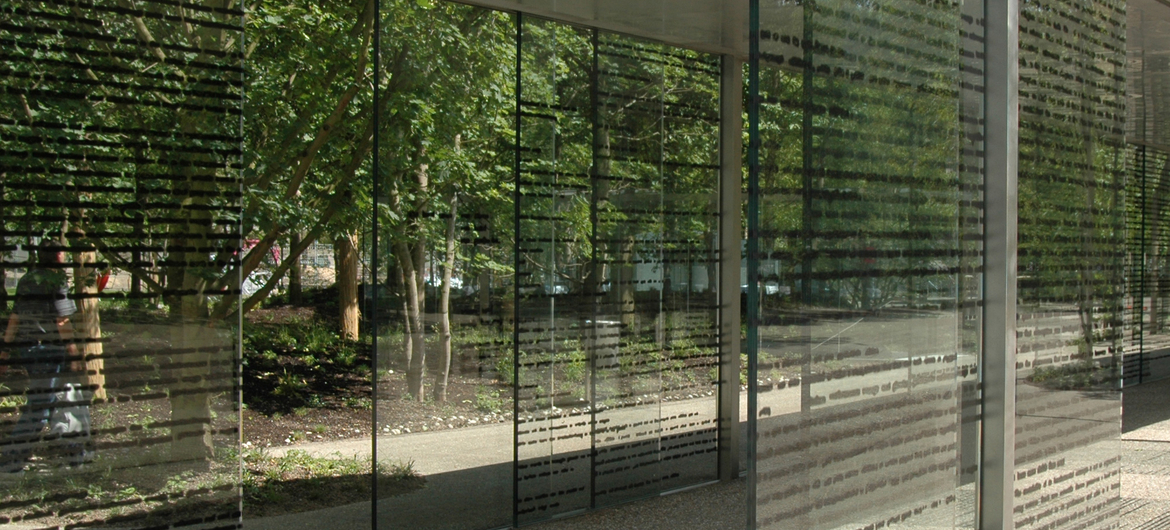Year: 2007
Material/Technique: Steel and Glass panels with blurred silkscreened texts
Dimensions: 48m long, 3,5m wide, and 3m high
The Walkway passage by Eva Schlegel inspired by Japanese pavilions, links the main entrance to the inner Campus area. It is designed as an elongated pavilion with sliding glass doors on its sides. The panels are arranged irregularly in twos and threes, or as stand-alone components. Sometime they overlap, creating an asymmetrical sequence of openness and shelter, all the while providing views of the surrounding landscaped grounds.
Pages of text blurred to the point of illegibility are silkscreened on the glass panels. The texts themselves come from the artist’s own library. They are pages from scientific treaties, interviews, poems – all deliberately photographed out-of-focus so that only the different fonts and layouts can be identified, while the actual content of the text is left to the imagination of the viewers. In her words: “What makes a text immediately recognizable as such, when it is detached from its primary information content, and in what way does text differ from an image?” A certain blur evokes a painterly, melancholy, fragile effect.
Artist
Conceptual artist Eva Schlegel (Tirol 1960-) lives and works in Vienna. She studied at the Academy of Applied Arts, Vienna and later became a Professor of Art and Photography at the Academy of Fine Arts. In 2011 she was commissioner of the Austria Pavilion at the Venice Biennale.
Her work includes photography, objects, but also installation works realized experimentally and spatially by using different media such as photography on lead, mirror or glass. She questions the limits of perception of common viewing habits. Often she deals with the limits of perception in her artworks featuring unreadable text. She poses the question: “Why do we immediately see text as such, even when it is free of primary informational content?”
In her words: “That the materiality of the glass be barely perceptible is essential for this piece for several reasons as my work is also always an investigation of space, both architectural and immaterial. On the one hand, the text seems to float in space, the boundary between appearance and disappearance is not defined, but on the other hand, the glass also enables the overlaying of different texts.” (Eva Schlegel)
Since 1995, Eva Schlegel has completed numerous public art projects in Austria and abroad. Her work has been the subject of numerous solo and group exhibitions throughout the world including at the Venice Biennale, Sydney Biennale, the New Museum of Contemporary Art, New York, Kochi-Muziris Biennale, Kochi, Holbaek Art Festival, Holbaek, China International Gallery Exhibition, Beijing, Mak Center for Art and Architecture, Los Angeles.
